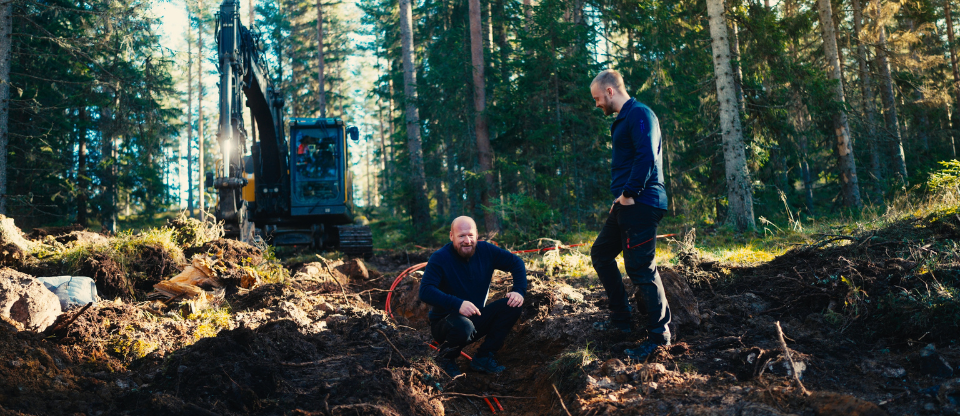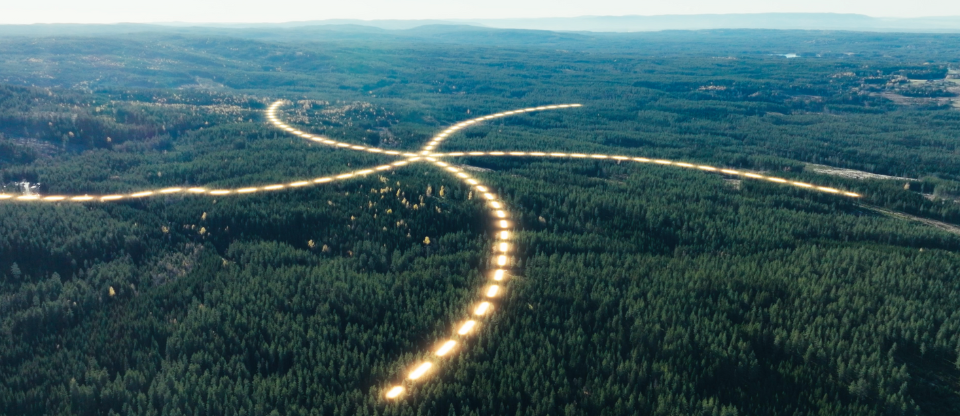New national infrastructure for fiber technology!

New opportunities for research on the use of fibreoptic sensing technology! NORSAR has established a new large-scale research facility at Stendammen, Løten, called the NORFOX array.
In April, NORSAR's new research facility for testing fibreoptic sensing technology at Løten was ready for use by the research community. The facility has been named NORFOX array. The infrastructure is part of the Norwegian contribution to ECCSEL ERIC and financed by The Research Council of Norway. The facility is the the largest purpose-built fibre-optic sensing infrastructure designed for seismological research.
Using optical fibres for sensing ground vibrations, has huge potential for various geophysical monitoring applications. This includes helping to accelerate the development of cost-effective monitoring for industrial-scale geological CO2 storage.
NORFOX consists of 5 arms, each approximately 1.7 km long. Each arm has two different fibre-optic cables, buried 50 cm beneath the forest floor.

Photo: Vjus
A major advantage is that the infrastructure is co-located with the NORES seismic array, providing high-quality data that can be used to compare and calibrate the new fibreoptic-data.
The cables offer the capability for state-of-the-art geophysical sensing technology. Distributed Acoustic Sensing (or DAS) is an emerging technology, that converts standard communication fibres into a linear array of discrete vibration sensors.
In addition to NORFOX, the fiber optic infrastructure consists of the following components:
- NOR-FROST – a fibre optic sensing test site in the grounds of NORSAR
- 2 DAS- and 1 DTSS portable interrogators that can be connected to standard and specially designed fibreoptic cables.
Interested? Contact us for more information.
